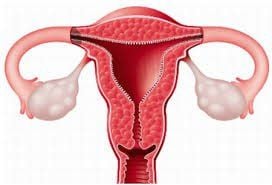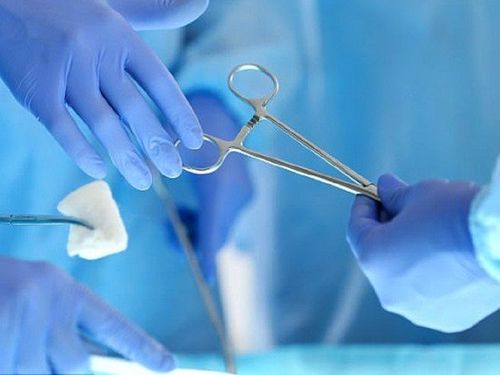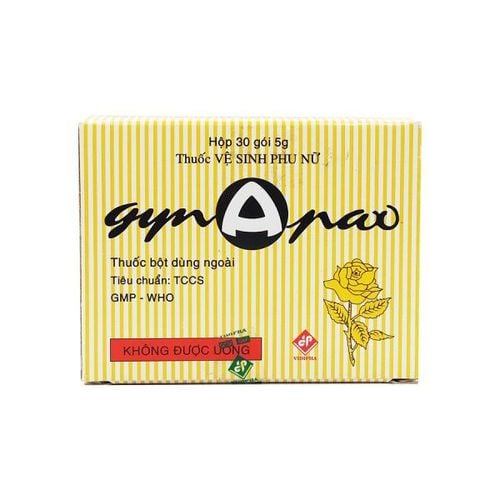This is an automatically translated article.
The article was professionally consulted with Specialist Doctor II Lai Thi Nguyet Hang - Obstetrician and Gynecologist - Department of Obstetrics and Gynecology - Vinmec Ha Long International General Hospital.Adhesions of the uterus do not occur immediately, but develop gradually. If detected late, severe uterine adhesions can bring about many unpredictable harms such as: Difficulty getting pregnant; miscarriage; premature birth, ... or can even cause infertility in women.
1. The phenomenon of uterine adhesions
New menstrual period separates to store menstrual blood. Therefore, when there is no longer the bottom layer and the upper layer as a cushion in the middle, the two muscular walls of the uterine cavity are pressed and stick together, causing uterine adhesions.Common manifestations when women have uterine adhesions are menstrual days and very little menstrual flow each menstrual period in the case of partial uterine adhesions or no period in the case of total uterine adhesions.
In addition, when the uterus is attached, the female body also has some symptoms such as: Chest tightness, fatigue, discomfort, back pain, lower abdominal pain,... Abdominal pain in Patients with uterine adhesions are caused by infection or by the inability of menstrual blood to exit.
Causes of uterine adhesions may be due to:
Due to the effects of complications after childbirth or consequences after abortion, miscarriage with placenta left over; Inflammation of the uterus due to abortion at unsafe facilities; Having an infection that is not treated in time; The bottom layer of the endometrium shows signs of deterioration.

2. What is hysteroscopy?
Adhesive hysteroscopy is a technique that uses an assistive instrument, a laparoscope with a small camera and light source, inserted into the uterus through the vagina, transmitting image signals to the screen to help the doctor observe the structure. inside of the uterus.Hysteroscopy is a safe and effective method to find and detect the exact cause of uterine pathology leading to infertility in women. In some cases, hysteroscopy also helps to treat some diseases that women often have in this area.
Hysteroscopy is an important step in performing hysterectomy. Features of laparoscopic hysterectomy are that there is no need to cut the patient's abdomen, no dissection of the uterus, no pain after the surgery, quick recovery, and early discharge from the hospital.
3. Should laparoscopic surgery to adhere to the uterus?
Adhesions of the uterus do not occur immediately, but develop gradually. If detected late, severe uterine adhesions can cause many unpredictable harms such as:Difficulty getting pregnant or increasing the risk of infertility: Because the bottom layer is deeply damaged, the uterine lining is difficult to increase. birth, cannot thicken to prepare for embryo implantation. Easy miscarriage: Sticking to the uterus makes the shape and function of the uterus not guaranteed, so it is easy to cause miscarriage. Premature birth, massive bleeding after birth: The uterine cavity is sticky, loses its natural elasticity, and is difficult to respond to the development of the fetus. Besides, because the placenta attaches too tightly to the uterus where there is no mucosa, during childbirth, the uterine part is severely damaged, causing a lot of bleeding. Therefore, uterine adhesions can be completely overcome by laparoscopic adhesion surgery if detected early to avoid complications.

4. Laparoscopy with uterine adhesions
This is the most effective method to separate the uterine cavity. The doctor will insert the laparoscope and electric knife into the uterus through the vagina and proceed to remove the adhesion. Laparoscopic surgery to remove adhesions is only performed at specialized hospitals with modern equipment and a team of experienced and qualified medical professionals.This method is indicated for cases: secondary infertility, uterine adhesions. Contraindicated in case of malignancy in the uterine cavity; Allergy to uterine distension fluid used in hysteroscopy. 4.1. Step 1: Prepare and sterilize the diagnostic and surgical hysteroscope. Step 2: General examination and specialist assessment of comorbidities; counseling on risks, complications and complications of surgery; Hysterosalpingogram to determine adhesion lesions of the uterus for those who need surgery. Step 3: Instruct the patient to lie in a gynecological position, then inject pain relief for the patient. Step 4: Disinfect the genital area; catheterization and catheterization; insert a vaginal valve or speculum; cervical pair. Step 5: The person performing the procedure conducts separation of the uterine cavity. After the uterine adhesions are removed, a T-ring is inserted into the uterine cavity; and regenerate the uterus. Step 6: After removal of the uterine adhesions, repeat hysteroscopy to check that there is no bleeding and that the uterine cavity is intact. There are a number of complications after surgery to adhere to the uterus such as: Bleeding; cervical tear; uterine perforation. However, these complications are very rare if the patient chooses a medical facility that meets the standards of medical equipment and the expertise of a skilled doctor.
4.2. Post-operative care After surgery, it is necessary to monitor the whole body, pulse, blood pressure, and blood volume from the vagina at the end of surgery for a few hours. Patients can move about 6-12 hours after surgery. About 12-24 hours after the procedure, the patient should eat and drink. Follow up with doctor's appointment. If you have unusual symptoms, you should be examined and consulted with a specialist.
Please dial HOTLINE for more information or register for an appointment HERE. Download MyVinmec app to make appointments faster and to manage your bookings easily.














